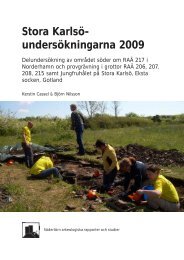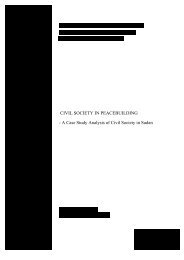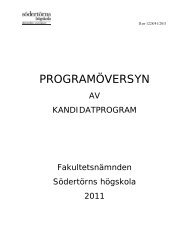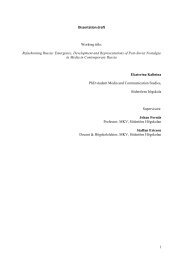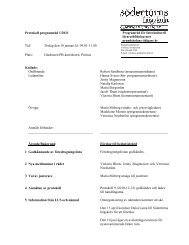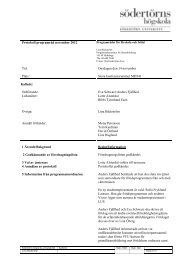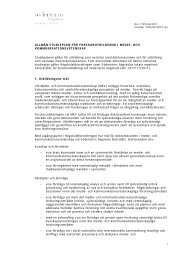Underlying Reasons for the Persistence of Female Genital Mutilation
Underlying Reasons for the Persistence of Female Genital Mutilation
Underlying Reasons for the Persistence of Female Genital Mutilation
You also want an ePaper? Increase the reach of your titles
YUMPU automatically turns print PDFs into web optimized ePapers that Google loves.
3.1.4 The Convention on <strong>the</strong> Elimination <strong>of</strong> All Forms <strong>of</strong> Discrimination Against <br />
Women <br />
In 1979 <strong>the</strong> general assembly adopted <strong>the</strong> convention on <strong>the</strong> elimination <strong>of</strong> All Forms <strong>of</strong><br />
Discriminations Against Women (CEDAW). It defines discrimination against women as:<br />
“… any distinction, exclusion or restriction made on <strong>the</strong> basis <strong>of</strong> sex which has <strong>the</strong> effect or<br />
purpose <strong>of</strong> impairing or nullifying <strong>the</strong> recognition, enjoyment or exercise by women, irrespective<br />
<strong>of</strong> <strong>the</strong>ir marital status, on a basis <strong>of</strong> equality <strong>of</strong> men and women, <strong>of</strong> human rights and<br />
fundamental freedoms in <strong>the</strong> political, economic, social, cultural, civil or any o<strong>the</strong>r field.”<br />
CEDAW is <strong>of</strong>ten described as an international bill <strong>of</strong> <strong>the</strong> right <strong>for</strong> women and is <strong>the</strong> only human<br />
rights treaty which affirms <strong>the</strong> reproductive rights <strong>of</strong> women. The convention addresses FGM<br />
and o<strong>the</strong>r cultural practices that are harmful to women through unequal gender relations<br />
perspective. The women’s convention is aimed at eliminating all discrimination, in all <strong>for</strong>ms and<br />
areas affecting women’s lives. By accepting <strong>the</strong> conventions, states are obligated to incorporate<br />
<strong>the</strong> principles <strong>of</strong> equality <strong>of</strong> men and women in states legal system, abolishing all discriminatory<br />
laws, and adopt appropriate ones that prohibit discrimination against women. The convention<br />
sets up <strong>the</strong> frameworks that should provide women <strong>the</strong> equal access and opportunity in political<br />
and public life, as well as education, health and employment as <strong>for</strong> men, and target social and<br />
cultural patterns <strong>of</strong> conduct with a view to eliminate <strong>the</strong> prejudice and customary practices based<br />
on stereotyped roles <strong>for</strong> men and women. Culture and tradition are seemed as influential <strong>for</strong>ces<br />
shaping gender roles and family relations 35 .<br />
3.1.5 The Convention on <strong>the</strong> Rights <strong>of</strong> <strong>the</strong> Child <br />
Human rights protections apply to all humans, adults and children. However children are<br />
considered more vulnerable and <strong>the</strong>re<strong>for</strong>e need particular rights <strong>for</strong> <strong>the</strong>ir protection. FGM<br />
violates <strong>the</strong> human rights <strong>of</strong> children when per<strong>for</strong>med on infants and young children. The CRC<br />
makes explicit reference to “harmful traditional practices” in <strong>the</strong> context <strong>of</strong> <strong>the</strong> child’s right to<br />
<strong>the</strong> highest attainable standard <strong>of</strong> health 36 . As any international law, when ratifying, <strong>the</strong> state is<br />
35 United Nation, text <strong>of</strong> CEDAW <br />
36 CRC art. 24.3 <br />
16



